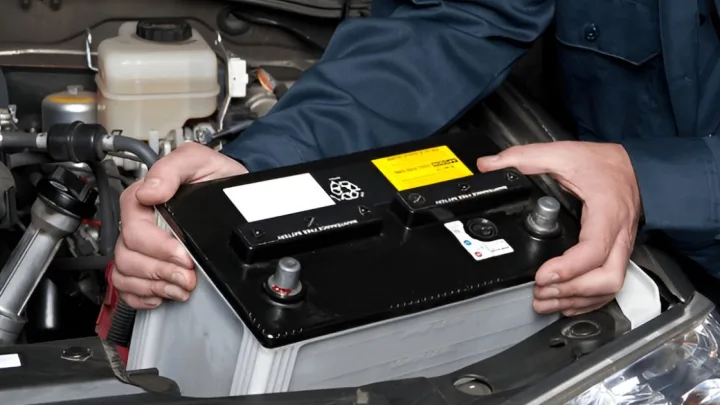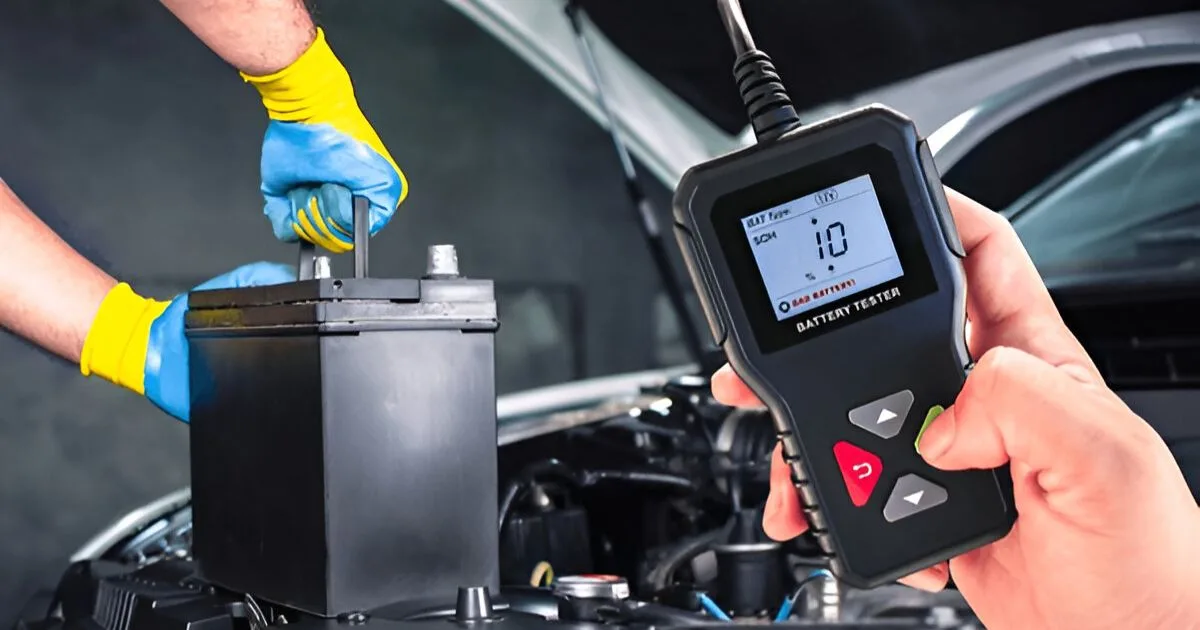
Knowing when it's time for a new car battery is crucial. Key signs include slow engine start and dim lights.
Choosing the right moment to replace your car battery can save you from unexpected breakdowns and ensure your vehicle's reliability. Car batteries typically last between 3 to 5 years, but this lifespan can vary based on driving habits, climate, and vehicle type. Experiencing electrical issues or a swollen battery case are clear indicators that it's time for a change.
Regular maintenance checks help identify potential problems early, preventing you from getting stranded. Keeping an eye on your battery's age and performance ensures your car remains in top condition. Remember, a failing battery not only affects starting your car but also impacts the overall electrical system. Stay ahead of battery issues with timely replacements.
Recognizing The Warning Signs
Knowing when to replace a car battery is crucial. It ensures a reliable vehicle. Watch for these telltale signs to avoid getting stranded.
Sluggish Engine Crank
When you turn the key, a healthy battery responds quickly. A slow, labored start often means the battery struggles to function.
Listen for slow cranking. It's a clear signal that your battery needs attention.
Check Engine Light Activation
The check engine light can indicate various issues, including battery problems. If this light illuminates, get a battery test. Modern vehicles rely on electronics.
A weak battery affects performance and safety.
- Monitor dashboard lights
- Perform regular battery checks
- Notice dimming headlights and electrical issues
Stay proactive with battery maintenance. It prevents unexpected failures and extends vehicle longevity.
Battery Age Matters
 Battery Age Matters
Battery Age Matters
Knowing when to get a new car battery is key. The age of your battery plays a big role. Let's explore why.
Typical Battery Lifespan
Most car batteries last 3 to 5 years. But, this can change. It depends on many factors.
These include the type of battery, the climate you live in, and how you use your car.
- Standard batteries - 3 to 5 years
- Premium batteries - up to 6 years
Impact Of Driving Habits
Your driving habits affect your battery's life. Short trips don't let the battery fully charge. This can shorten its life. Hot or cold weather can also have a big impact.
| Driving Habit | Impact on Battery |
|---|---|
| Short trips | Decreases lifespan |
| Long trips | Increases lifespan |
| Hot weather | Decreases lifespan |
| Cold weather | Can decrease lifespan |
Understanding battery age matters helps you know when to get a new one. Keep an eye on your battery's age and how you use your car. This way, you can ensure your car runs smoothly.
Visual Inspection Clues
Knowing when to replace a car battery is crucial. A visual check often tells the story. Let's explore key signs that suggest a new battery is due.
Corrosion And Leakage
Spotting corrosion is a clear signal. Look for white or greenish substance. It often accumulates around the terminals. This hinders electric flow and signals battery issues.
Battery leakage is another red flag. Check for wet spots or dried residue on the battery case. It indicates a possible crack or damage within.
Physical Battery Condition
Inspect your battery's shape. A swollen or bloated battery case suggests overheating. Heat warps batteries, reflecting internal failure. This condition warrants an immediate battery check.
Lastly, check the manufacture date. Batteries last about 3 to 5 years. If yours is older, consider a replacement to avoid unexpected failures.
Electrical Issues And Symptoms
Electrical issues often signal a dying car battery. Your vehicle relies on a healthy battery for smooth operation. Recognize the symptoms early to avoid a breakdown.
Dimming Headlights
At night, bright headlights are crucial. Dimming headlights may mean a weak battery. As power drops, lights lose intensity. This puts you and others at risk.
Flickering Cabin Lights
Inside your car, lights should be steady. Flickering cabin lights can indicate battery issues. Inconsistent lighting suggests fluctuating power levels. Keep an eye on dash and overhead lights.
Performance In Extreme Temperatures
Performance in Extreme Temperatures plays a crucial role in battery life. Car batteries have an optimal operating range. Too hot or too cold and performance drops.
This can signal the need for a new battery. Knowing how your battery handles temperature extremes is key.
Cold Weather Strain
Cold weather hits car batteries hard. Chemical reactions slow in the cold. This means less electrical energy for starting your car. Look for these signs:
- Slow engine crank: The starter motor labors to turn the engine.
- Dim lights: Headlights and dashboard lights may appear weaker.
- Clicking sounds: You hear a click when turning the ignition, but the engine won't start.
These symptoms suggest a weak battery. Consider a replacement to avoid getting stranded.
Heat-induced Battery Wear
High temperatures can be just as harmful. They accelerate battery corrosion and fluid evaporation. Signs of heat-induced wear include:
- Swollen battery case: The sides bulge from heat damage.
- Leakage: Battery acid escapes, corroding terminals and connections.
- Slow engine start: Heat has weakened the battery, affecting performance.
These issues suggest the battery is past its prime. A new battery ensures reliability in the heat.
 Testing Your Battery’s Health
Testing Your Battery’s Health
Testing Your Battery's Health
Your car's battery is vital for starting your engine. Like all parts, it wears out over time. Knowing when to replace it saves you from unexpected breakdowns. Test your battery regularly to check its health. Here are two reliable methods to assess battery performance.
Using A Multimeter
Check your battery's voltage with a multimeter. A healthy car battery typically reads between 12.4 to 12.7 volts when the car is off. Readings below 12.4 volts suggest a weak battery. Follow these steps:
- Turn off your vehicle.
- Set the multimeter to measure voltage.
- Connect the multimeter's red lead to the positive battery terminal.
- Attach the black lead to the negative terminal.
- Read the multimeter display.
Regular voltage checks ensure timely battery replacements.
Professional Load Testing
Get a load test at a service center. This test simulates the battery's performance under typical usage conditions. It shows if the battery can hold charge under stress. A professional will:
- Connect a load tester to the battery.
- Apply a load equivalent to the engine's starter.
- Monitor the battery's voltage response.
Weak batteries fail to maintain voltage under load. Professionals recommend timely battery replacements to avoid car start failures.
Remember: Both methods give clear signs about your battery's condition. Use them to decide on a replacement before facing a dead battery situation.
Frequent Jump Starts
Experiencing frequent jump starts might signal it's time for a new car battery. Let's explore why.
Jump Start As A Red Flag
Needing a jump start once in a while is common. But, if your car needs it often, pay attention. It often means your car battery struggles to hold a charge. This could point to its end. A healthy battery should start your car without help.
Risks Of Ignoring Jump Starts
- Damage to your car: Frequent jump starts can harm other parts of your car.
- Stranded: You might find yourself stuck if your car won't start.
- Cost: Ignoring the issue can lead to higher repair bills later.
It's wise to address frequent jump starts quickly. This can save you time, money, and stress.
Maintenance To Prolong Battery Life
Maintaining your car's battery ensures longevity and reliability. Proper care can prevent untimely failures. Follow these maintenance tips to extend your battery's life.
Regular Battery Cleaning
Dirt and corrosion affect battery performance. Clean terminals keep the current flowing smoothly.
Use a mix of baking soda and water to scrub the terminals. Rinse with cold water, and dry with a clean cloth.
Wear protective gloves and goggles for safety.
Ensuring Tight Connections
Loose connections can cause starting problems. Check the clamps and cables for a snug fit. Tighten any loose parts with a wrench. Do not over-tighten, as this can damage the battery posts.
Making The Right Replacement Choice
Car batteries don't last forever. Signs like dim headlights or slow engine crank suggest it's time for a change. Making the right replacement choice ensures your car runs smoothly. Consider battery type, size, and warranty when selecting a new battery.
Selecting The Correct Battery
Car batteries come in various sizes and types. Check your owner's manual for the right fit.
Match the battery's cold cranking amps (CCA) to your car's requirement.
Look for batteries with a long warranty period for better assurance.
Professional Vs. Diy Replacement
Decide between professional installation or doing it yourself. Replacing a battery can be straightforward.
But, it may require handling corrosive materials.
Professionals ensure safe and correct installation. DIY may save money if you have the right tools and knowledge.
Disposal And Recycling Of Old Batteries
Car batteries don't last forever. Knowing when to replace them is crucial. But what happens to the old one? Proper disposal and recycling are key. Let's dive into the best practices for saying goodbye to your used battery.
Environmental Considerations
Old batteries contain harmful chemicals. These chemicals can hurt nature if not handled right.
Lead, acid, and other materials can pollute water and soil. Recycling helps save resources.
It also keeps toxins out of the environment. Always choose eco-friendly disposal options.
Safe Disposal Practices
Never throw batteries in the trash. Local regulations dictate safe disposal.
Many auto shops and recycling centers accept old batteries. They have the right tools to handle them. Some places may even pay you for the old battery.
Always wear gloves and eye protection when handling old batteries.
- Find a certified recycling center.
- Transport the battery upright to prevent leaks.
- Store in a cool, dry place before disposal.
Remember, responsible disposal protects the planet. It ensures materials get a new life in new batteries. Together, we can make a difference.
Related Post
How to Test a Car Voltage Regulator With a Multimeter: Quick Guide
What is the Most Common Battery Cable Terminal: Key Insights
Why Sulphuric Acid is Not Used on a Car: Dangers Revealed
Can You Use Aluminum Foil on Car Battery Terminals? Boost Performance!
What Happens When Car Battery Cables are Wrongly Connected: Risks & Fixes
How to Install a Car Battery Holder: Quick & Secure Guide
How Do You Know If Your Car Alternator is Bad? Spot Signs Now!
Conclusion
Recognizing the right time to replace your car battery is crucial for uninterrupted travels.
Watch for telltale signs like slow starts and dim lights. Prioritize regular check-ups to avoid sudden failures.
Embrace timely battery updates to ensure your vehicle remains reliable on every journey.
Drive with confidence, knowing your car is powered to perform.
Disclosure
Some links may be affiliate links. That means we may earn a small commission at no extra cost to you.